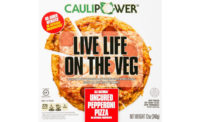Ready-to-eat (RTE) popcorn continues to find a willing audience at both ends of the dietary spectrum, with both health-forward and indulgent options seeing growth. To fuel this ongoing expansion of popcorn diversity, snack producers continue to experiment with new flavors, while also scrutinizing other aspect of production that can factor into product presentation.
Overview | Chips | Puffed/Extruded Snacks | Popcorn | Snack Mixes & Nuts | Tortilla Chips | Pretzels | Frozen Snacks | Crackers
Market data
The ready-to-eat popcorn/caramel corn segment—part of the $24.9 billion salty snacks category—rose 4.1 percent in sales to $1.4 billion for the 52 weeks ending May 19, 2019 according to IRI, Chicago.
The Frito-Lay business Smartfoods leads the RTE popcorn segment with over 30 percent of share. Its signature Smartfood line grew 5.5 percent to $418.5 million. Another Frito-Lay brand, Cracker Jack, grew 2.3 percent to $38.7 million.
SkinnyPop, now a Hershey Co. business, saw its flagship line grow 7.6 percent to $208.9 million. The SkinnyPop SkinnyPack line of multipack of portion-controlled 100-calorie bags also grew, up 12.4 percent to $49.0 million.
Angie’s BOOMCHICKAPOP, a Conagra Brands business, experienced strong growth of 13.6 percent to $123.6 million.
Other notable areas of growth included the Eagle Foods brands Popcorn Indiana, up 20.2 percent to $50.6 million, and G.H. Cretors, up 20.8 percent to $26.3 million.
The microwave popcorn segment continues to struggle, but had a slightly better year per IRI, down 0.6 percent to $748.2 million. This improvement was largely due to a stronger performance by segment leader Conagra Brands. Its top-selling microwave popcorn brand, Orville Redenbacher’s, grew 21.3 percent to $144.4 million. Conagra’s Act II brand also grew, up 16.1 percent to $63.8 million. Private label also had a very strong showing in microwave popcorn for the year, up 36.4 percent to $116.1 million.
Looking back
Some of the most-significant trends in RTE popcorn have centered on indulgence, says Steve Gallo, CEO, POP! Gourmet Foods, Tukwila, WA. This takes the form of cookie-inspired products, sweet popcorn coatings, and drizzles of chocolate and/or caramel, as well as savory and spicy flavors.
Spicy has emerged again as a movement across salty snacks, including popcorn. The Smartfood brand recently launched a Hot Buffalo popcorn. And on the microwave popcorn side of the business, JOLLY TIME Pop Corn released Blazin’ Blast O and Blazin’ Cheez products during 2018.
The balance between light, airy popcorn and a notable flavor accent draws appeal. “The technologies to cover and drizzle popcorns have improved,” says Gallo, whose company makes products co-branded with Almond Roca, Hidden Valley Ranch and Huy Fong Sriracha, among others, as well as offering flavors like jalapeño and black truffle. “The ability to put flavor on air popped corn has improved, as well—the seasoning technologies have improved.”
POP! Gourmet Foods pays close attention to what they see consumers doing at home, particularly through recipes people post, cooking shows and YouTube videos, Gallo says. “People put Ranch dressing on their popcorn,” he says. “We do look for interesting trends that way. The production environment challenge is to mimic those trends.”
Manufacturers are also looking to follow healthfulness trends, attempting to become certified with claims like organic or gluten-free, Gallo says. “Several companies have launched organic, lower-calorie, healthier oils,” he says, which work in favor of health-forward RTE popcorn products.
The oils used in the category have shifted as consumer preferences have migrated from microwave to RTE, says Jana Mauck, senior marketing strategist, Cargill, Minneapolis, which makes the Clear Valley line of high-oleic oils. “Ready-to-eat is driven by the wellness factor—it carries a perceived health halo—and a convenience factor, which seems to be the overarching trend within snacks overall. We’re seeing some indulgence, too, especially in ready-to-eat, but even some unique flavors in the microwave aspect.”
The oils chosen play a role in bringing about any of those qualities, Mauck says. “Whether you want to accentuate the flavor, or have a clean palate for the flavor purists, the oil choice in that makes a difference.”
Looking forward
Going into the future, Gallo expects to see continued experimentation both in terms of flavorings and seasonings, and also an expanded array of better-for-you products. “There are people who are going to be doing things to make popcorn a more-functional food,” he says. “I’ve heard people thinking about CBD popcorn. Can you add probiotics, and healthier mixes and seasonings? Along with flavorings, can you make popcorn more functional and give you better nutrition?”
But Gallo also expects to see companies continuing to try to reach those who are less concerned about their health when it comes to snacking on popcorn. “On the other end of the scale, I see more indulgence,” he says, such as cookie-inspired profiles. “It’s both ends of the spectrum.”
Mauck notes that the category will continue with the same mix of wellness, indulgence and convenience as factors driving sales forward. “Consumers are looking more for an experience from their snacks, and their popcorn,” she says. “We’re seeing the nutritional benefits that can be added. You need a complete solution.”
And the oils chosen to manufacture popcorn products will continue to play an integral role in bringing about those solutions, Mauck says. This fall, Cargill plans to bring to market its Clear Valley Non-GMO High Oleic Canola, which has a 73 percent oleic level, saturated fat of 6.5 percent, and adds to the company’s non-GMO portfolio, she says. “It’s a high-performing, high-stability oil utilized in the popcorn category for shelf-life stability. It’s tied into the health perception. It feels more like a permissible indulgence.”
And Mauck notes that the processing benefits of popcorn production oils could go even further into new nutritional areas. “We’re exploring and seeing what could be done in the future.”
Overview | Chips | Puffed/Extruded Snacks | Popcorn | Snack Mixes & Nuts | Tortilla Chips | Pretzels | Frozen Snacks | Crackers









